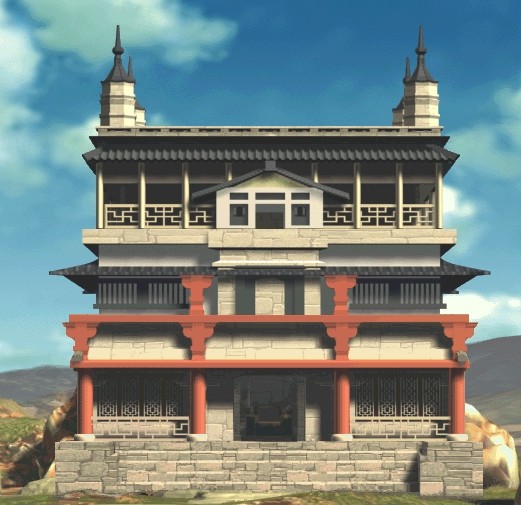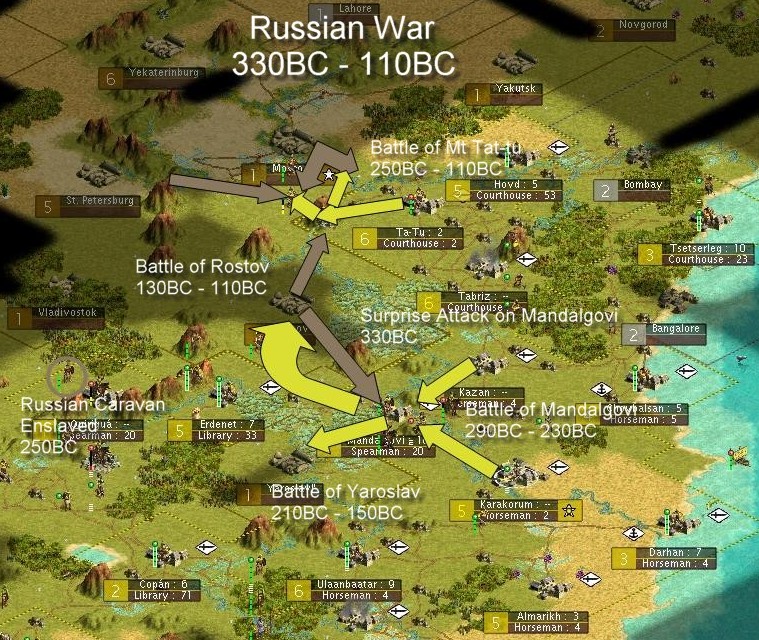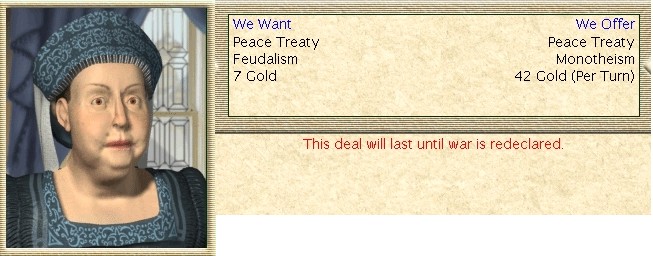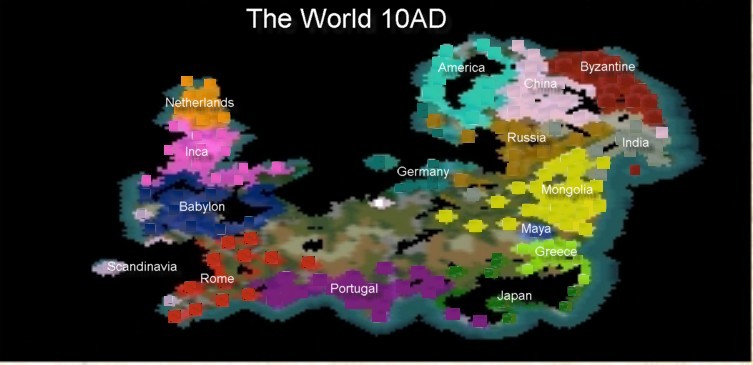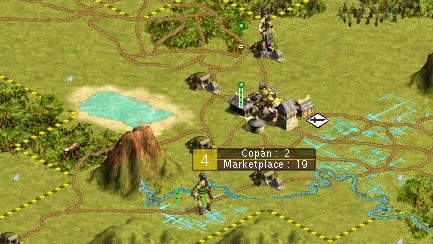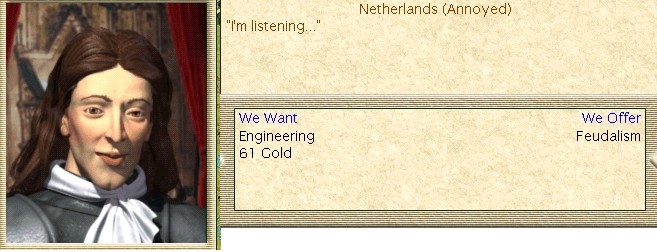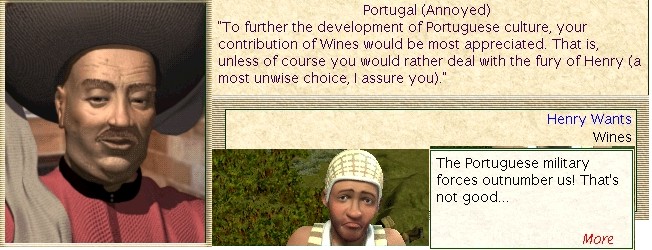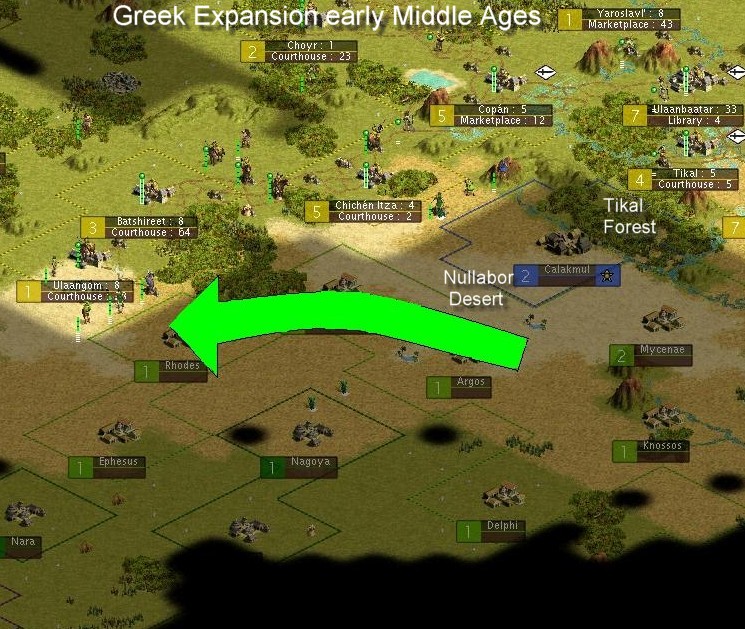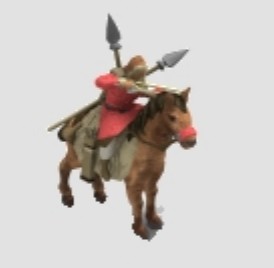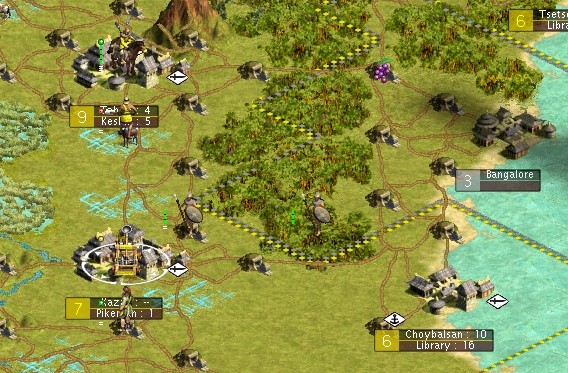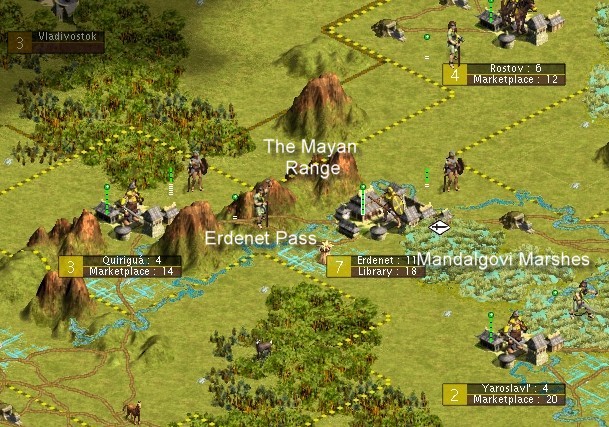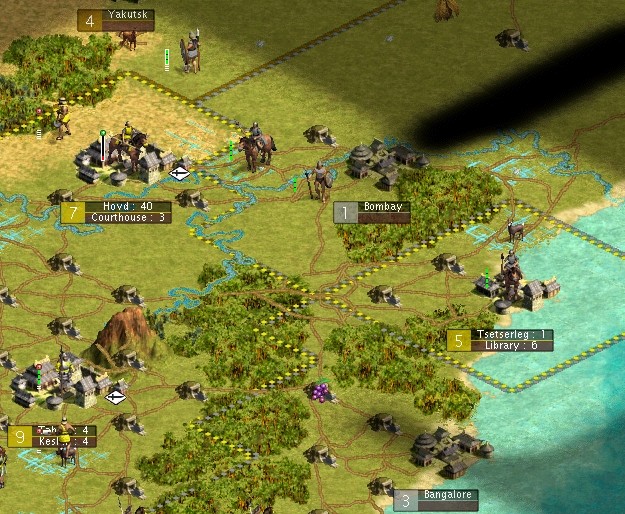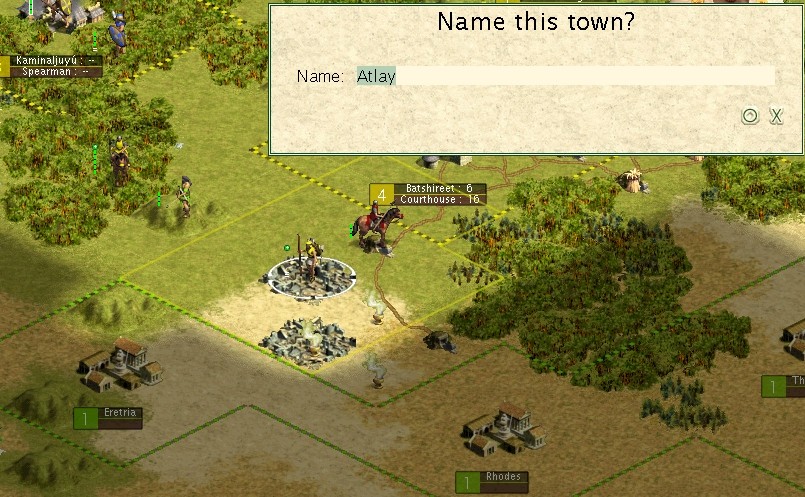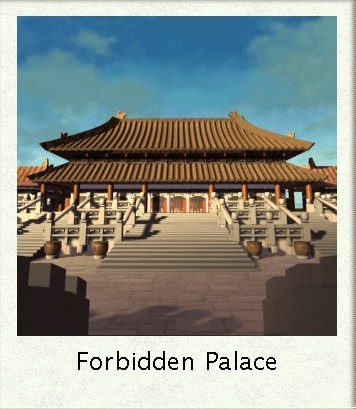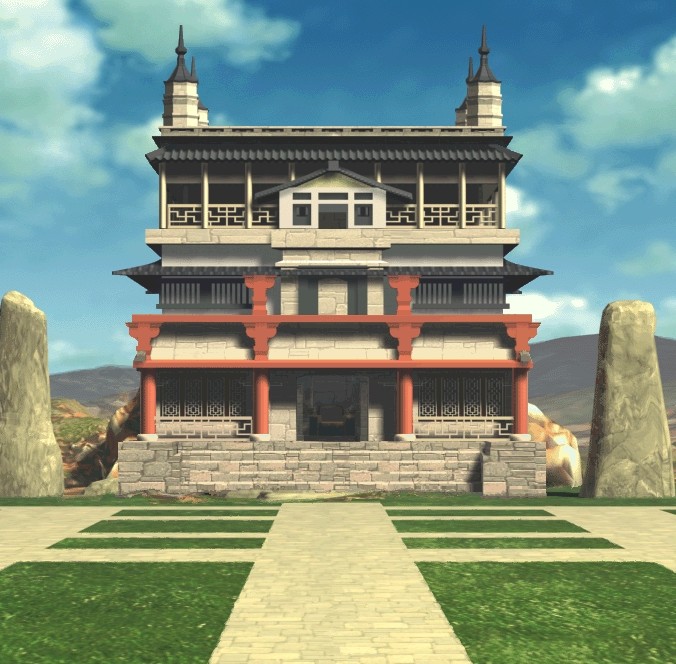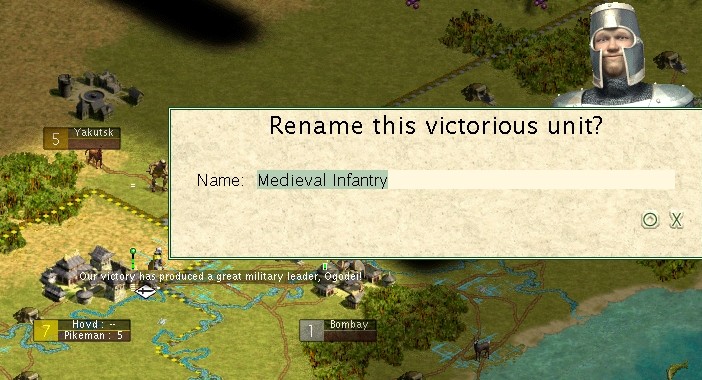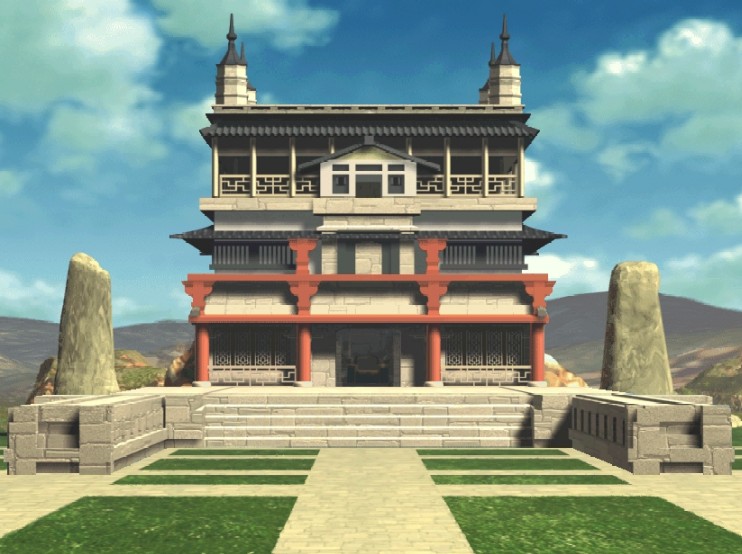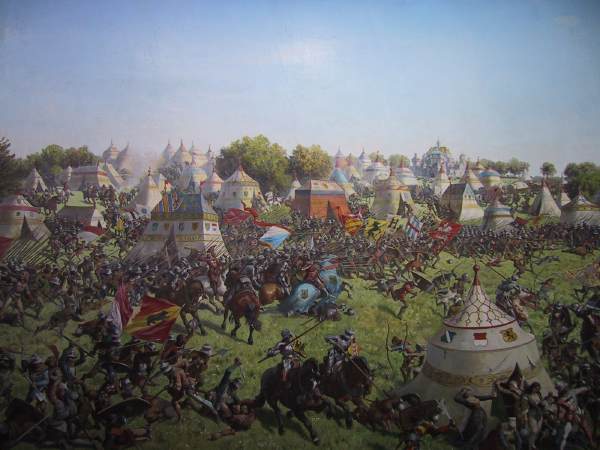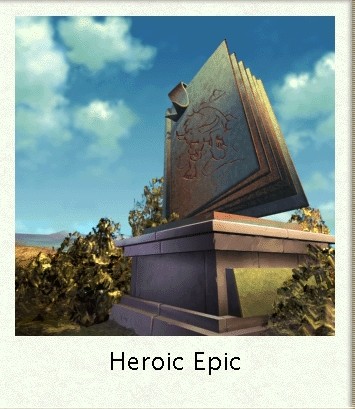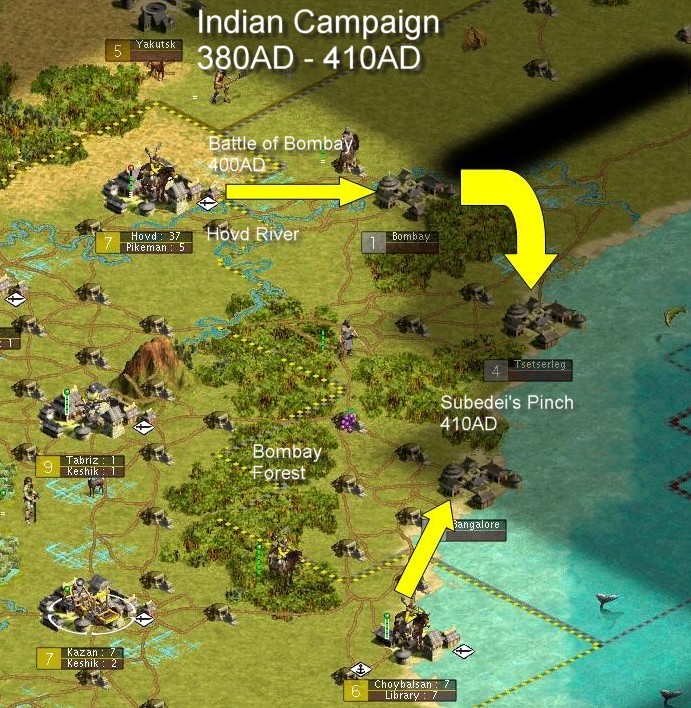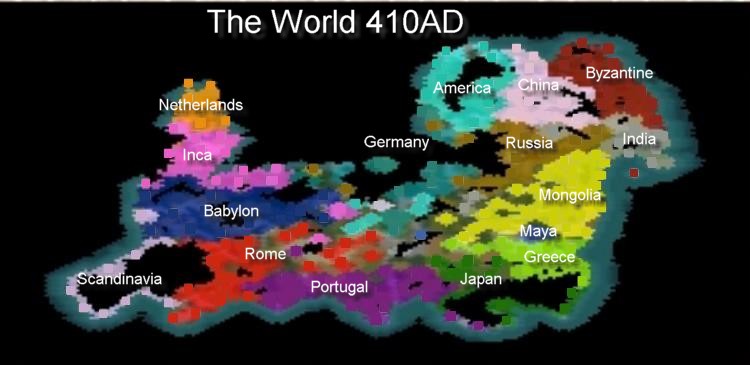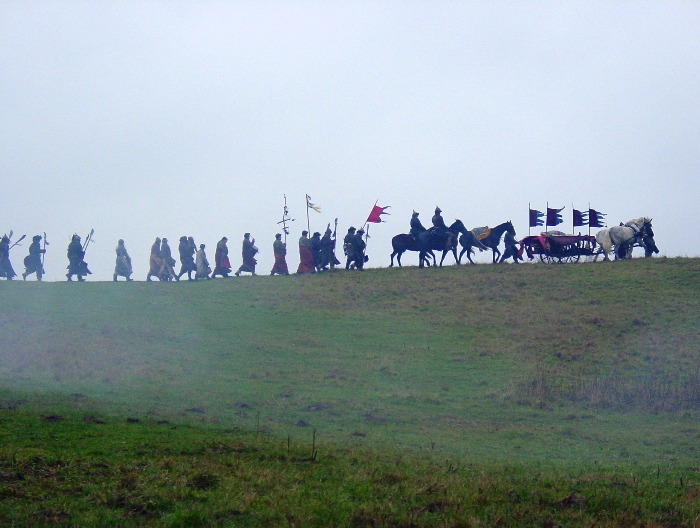Sandman2003
Prince
Chapter Four: The First Russian War
Subtitle: How the Russians escaped genocide
The Russian front was a long way from the western reaches of the former Mayan empire, and so the Russian surprise attack had the added benefit of time while the Khan’s forces transferred from one battle ground to another. So one might expect that the full force of the Russian military would prove insurmountable to the limited garrisoning forces available to the local commanders at Ta-tu, but such thoughts would be proven wrong! The Russians were the second tribe to be taught a lesson in humility as only the Mongols could.
It was also at this time that the Great Khan’s chief sage, the great magician, Yeh-lu Chu'tsai sought audience with the Great one himself. Yeh-lu had many matters on his mind that he needed to discuss with the Khan. The first such matter was a renewed discussion on the topic of how best to rule this expanded empire. While all citizens of the Mongolian Empire basked in the greatness of the Khan, and would continue to do so, there appeared to be several ways of improving the functioning of the state.
The first of course was this new found knowledge of the representative governing form called the republic. But there existed another form of governance that Yeh-lu’s men had become aware of, and this was the Monarchy. It seemed that this currently unknown form of governance provided a better support for a larger army, and continued to place the leader in a highly exalted position amongst the citizens. On the other hand, the sacrifice for choosing this government over the already known republican form of governance would be a less effective control over corruption as the empire grew. Both men shared a common vision of a Mongolian empire substantially larger than the current size. So in the longer term, it was clear that the republic offered advantages over the monarchy. So which to choose, the short term benefit over the long term benefit?
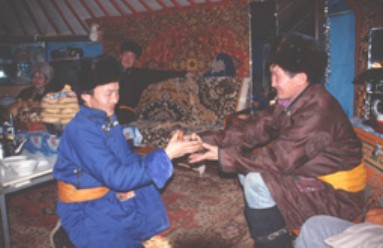
The Great Khan and Yeh-lu in one of many discussions of state
The Khan put off an immediate decision on which government type to chose, but he did authorise the immediate procurement of this technology so that the two forms of governance could be compared. The Chinese ruler, Mao, possessed this knowledge of Monarchy, but lacked the knowledge of how to formulate a republic, so a simple barter was organised and both tribes were the better for it.
Yeh-lu had other matters of urgency to discuss with the Khan as well. The common dream of the uber-horseman remained with both men, and now Yeh-lu saw a means to expedite the development of such a concept. In his vision, Yeh-lu believed that by developing a code of conduct from this single deity religion, and extrapolating the weapon systems from the feudalistic troops, it would be possible to create a truly magnificent mounted force that could sweep all currently known obstacles aside in the Mongols quest for space. To this end Yeh-lu approached the Khan to authorise the spending of the entire Mongolian treasury in pursuit of this goal. No finer purpose off the battlefield would ever eventuate than the realisation of the long cherished dream of both men. So the authorisation came.
The plan was to use the cash to gain one technology, and then to trade further with that to procure more. The key to this whole effort was to be the feudalism concept held only by the brash Byzantine people. If they could be persuaded to part with this technology, then there were two avenues of further trade available to secure the single deity knowledge, and the useful engineering concept that allowed for the quicker crossing of waterways, to speed forces to their destination.
The meeting with Theodora of the Byzantines did not go well. She flatly refused to deal for her feudalism knowledge, even when offered the republic governance system, over 1700 in gold and substantial further annual payments to supplement this! Outrageous! If there were not other more pressing concerns, these arrogant peoples would surely face the Mongols sword sooner rather than later.
Yeh-lu, was not yet dispirited. Entrusted with the full Mongolian treasury, Yeh-lu explored other options to achieve the necessary technological advancement. One such option was available through a man of similar leanings as Yeh-lu himself. Hammurabi was a prophet and sage for the civilisation known as Babylon, and he possessed the secrets of this monotheism. There was an outside chance that with monotheism and the republic, Yeh-lu would be in a position to sway Theodora. So a deal for much gold in return for this concept, was struck.

Fresh with this new found knowledge, Yeh-lu returned to the realm of Theodora, but once again his noble intentions were met with blunt refusals to action a trade. It would seem that the knowledge of feudalism would have to be procured elsewhere. Even worse, the fact that such a large amount of gold entered the Babylonian vaults meant that now this rival civilisation had the leverage to make the Mongolian deal, and so feudalism became shared knowledge, but not amongst the Mongols. The Babylonians, the Byzantines, the Germans and even the evil Russians came to possess this vital information.
The Great Khan, meanwhile had chosen his preferred means of government. The short term advantages of this monarchy system, and especially the fact that it allowed for a greater force of arms to be deployed, were the key deciding factors for the Khan. And so, in the middle of the Russian conflict, the Great Khan ordered that the preparations for this new government should take place. The upheaval in the Mongolian empire would ensure that no new forces were available to be deployed during the period 230BC – 110BC. So was this then the reason that the Russians escaped the first Russo-Mongolian War so lightly?
To suggest that the Russian forces escaped lightly may in fact be an overstatement. Certainly the Russian commanders were foolish, and overestimated their position. In fact in 210BC, returning forces from Ereen’s command came across another Russian settler caravan and spear regiment escort. The regiment was cut to pieces as a warning to the settlers, who were also immediately enslaved by the Mongolians.
Closer to home, the main action was around the slopes of the Mountain Tat-tu, the only iron source for the Khan’s nation. The Russians sent wave after wave of swords and archers towards this target, and the town of Ta-tu, in an effort to weaken the Mongolian resolve. The Mongol field commander was a man called, Subedei, and he was every bit the equal of Ereen, if not his superior. Subedei was not going to settle for merely protecting the Mongolian homelands while awaiting the return of Ereen. No, he had far more grandiose plans.
For a start, the Russians never made it onto Mongolian soil. Subedei maintained an ‘active’ defence, whereby scouts on Mt Tat-tu would alert his regiments to the advancing Russian regiments, and he in turn directed his regiments to attack the Russians when they were most vulnerable. In the first great battle in the area, Subedei was outnumbered 2-1, but he managed to achieve a kill ratio of 3-1 by striking first and then forcing the enemy to attack him across the river.
Meanwhile in a truly bold move, Subedei ordered his recently victorious forces at Mandalgovi, to advance on to the Russian city of Yaroslav. For a long time this Russian city on the western side of the Mandagovi marshes had been a sign of Russian arrogance towards the rightful lands of the Mongols. This was to be the telling blow to reunite both sides of the marshland under Mongol rule. The first action there, however was the result of insufficient available forces and an effective attrition of about 100 men from both sides – Mongolian horsemen, and Russian spearmen.
The Khan soon found that he had an able leader in Subedei, and so was able to return to pressing affairs of state rather than get bogged down in this Russian conflict. The first action was to build a Mongol settlement at the site of the former Mayan town of Bohampak. This site was preferred over Dalandzadgad’s, because it ensured a wider border claim to the Mongolian state.
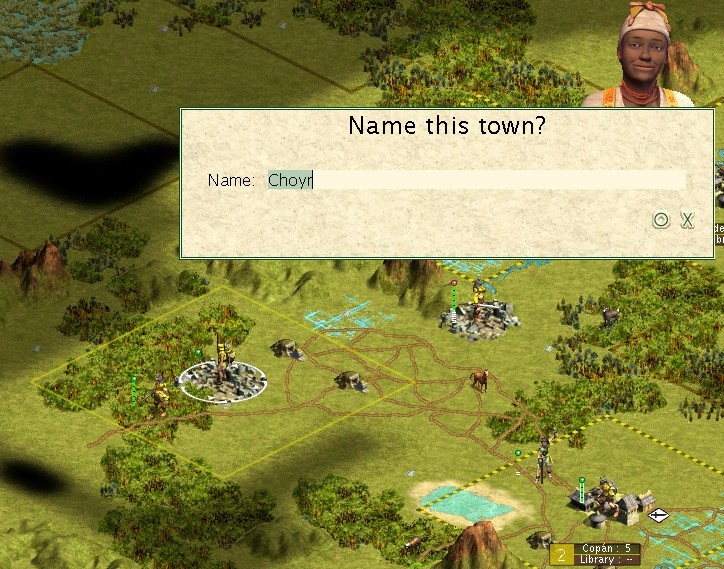
Subtitle: How the Russians escaped genocide
The Russian front was a long way from the western reaches of the former Mayan empire, and so the Russian surprise attack had the added benefit of time while the Khan’s forces transferred from one battle ground to another. So one might expect that the full force of the Russian military would prove insurmountable to the limited garrisoning forces available to the local commanders at Ta-tu, but such thoughts would be proven wrong! The Russians were the second tribe to be taught a lesson in humility as only the Mongols could.
It was also at this time that the Great Khan’s chief sage, the great magician, Yeh-lu Chu'tsai sought audience with the Great one himself. Yeh-lu had many matters on his mind that he needed to discuss with the Khan. The first such matter was a renewed discussion on the topic of how best to rule this expanded empire. While all citizens of the Mongolian Empire basked in the greatness of the Khan, and would continue to do so, there appeared to be several ways of improving the functioning of the state.
The first of course was this new found knowledge of the representative governing form called the republic. But there existed another form of governance that Yeh-lu’s men had become aware of, and this was the Monarchy. It seemed that this currently unknown form of governance provided a better support for a larger army, and continued to place the leader in a highly exalted position amongst the citizens. On the other hand, the sacrifice for choosing this government over the already known republican form of governance would be a less effective control over corruption as the empire grew. Both men shared a common vision of a Mongolian empire substantially larger than the current size. So in the longer term, it was clear that the republic offered advantages over the monarchy. So which to choose, the short term benefit over the long term benefit?

The Great Khan and Yeh-lu in one of many discussions of state
The Khan put off an immediate decision on which government type to chose, but he did authorise the immediate procurement of this technology so that the two forms of governance could be compared. The Chinese ruler, Mao, possessed this knowledge of Monarchy, but lacked the knowledge of how to formulate a republic, so a simple barter was organised and both tribes were the better for it.
Yeh-lu had other matters of urgency to discuss with the Khan as well. The common dream of the uber-horseman remained with both men, and now Yeh-lu saw a means to expedite the development of such a concept. In his vision, Yeh-lu believed that by developing a code of conduct from this single deity religion, and extrapolating the weapon systems from the feudalistic troops, it would be possible to create a truly magnificent mounted force that could sweep all currently known obstacles aside in the Mongols quest for space. To this end Yeh-lu approached the Khan to authorise the spending of the entire Mongolian treasury in pursuit of this goal. No finer purpose off the battlefield would ever eventuate than the realisation of the long cherished dream of both men. So the authorisation came.
The plan was to use the cash to gain one technology, and then to trade further with that to procure more. The key to this whole effort was to be the feudalism concept held only by the brash Byzantine people. If they could be persuaded to part with this technology, then there were two avenues of further trade available to secure the single deity knowledge, and the useful engineering concept that allowed for the quicker crossing of waterways, to speed forces to their destination.
The meeting with Theodora of the Byzantines did not go well. She flatly refused to deal for her feudalism knowledge, even when offered the republic governance system, over 1700 in gold and substantial further annual payments to supplement this! Outrageous! If there were not other more pressing concerns, these arrogant peoples would surely face the Mongols sword sooner rather than later.
Yeh-lu, was not yet dispirited. Entrusted with the full Mongolian treasury, Yeh-lu explored other options to achieve the necessary technological advancement. One such option was available through a man of similar leanings as Yeh-lu himself. Hammurabi was a prophet and sage for the civilisation known as Babylon, and he possessed the secrets of this monotheism. There was an outside chance that with monotheism and the republic, Yeh-lu would be in a position to sway Theodora. So a deal for much gold in return for this concept, was struck.

Fresh with this new found knowledge, Yeh-lu returned to the realm of Theodora, but once again his noble intentions were met with blunt refusals to action a trade. It would seem that the knowledge of feudalism would have to be procured elsewhere. Even worse, the fact that such a large amount of gold entered the Babylonian vaults meant that now this rival civilisation had the leverage to make the Mongolian deal, and so feudalism became shared knowledge, but not amongst the Mongols. The Babylonians, the Byzantines, the Germans and even the evil Russians came to possess this vital information.
The Great Khan, meanwhile had chosen his preferred means of government. The short term advantages of this monarchy system, and especially the fact that it allowed for a greater force of arms to be deployed, were the key deciding factors for the Khan. And so, in the middle of the Russian conflict, the Great Khan ordered that the preparations for this new government should take place. The upheaval in the Mongolian empire would ensure that no new forces were available to be deployed during the period 230BC – 110BC. So was this then the reason that the Russians escaped the first Russo-Mongolian War so lightly?
To suggest that the Russian forces escaped lightly may in fact be an overstatement. Certainly the Russian commanders were foolish, and overestimated their position. In fact in 210BC, returning forces from Ereen’s command came across another Russian settler caravan and spear regiment escort. The regiment was cut to pieces as a warning to the settlers, who were also immediately enslaved by the Mongolians.
Closer to home, the main action was around the slopes of the Mountain Tat-tu, the only iron source for the Khan’s nation. The Russians sent wave after wave of swords and archers towards this target, and the town of Ta-tu, in an effort to weaken the Mongolian resolve. The Mongol field commander was a man called, Subedei, and he was every bit the equal of Ereen, if not his superior. Subedei was not going to settle for merely protecting the Mongolian homelands while awaiting the return of Ereen. No, he had far more grandiose plans.
For a start, the Russians never made it onto Mongolian soil. Subedei maintained an ‘active’ defence, whereby scouts on Mt Tat-tu would alert his regiments to the advancing Russian regiments, and he in turn directed his regiments to attack the Russians when they were most vulnerable. In the first great battle in the area, Subedei was outnumbered 2-1, but he managed to achieve a kill ratio of 3-1 by striking first and then forcing the enemy to attack him across the river.
Meanwhile in a truly bold move, Subedei ordered his recently victorious forces at Mandalgovi, to advance on to the Russian city of Yaroslav. For a long time this Russian city on the western side of the Mandagovi marshes had been a sign of Russian arrogance towards the rightful lands of the Mongols. This was to be the telling blow to reunite both sides of the marshland under Mongol rule. The first action there, however was the result of insufficient available forces and an effective attrition of about 100 men from both sides – Mongolian horsemen, and Russian spearmen.
The Khan soon found that he had an able leader in Subedei, and so was able to return to pressing affairs of state rather than get bogged down in this Russian conflict. The first action was to build a Mongol settlement at the site of the former Mayan town of Bohampak. This site was preferred over Dalandzadgad’s, because it ensured a wider border claim to the Mongolian state.


